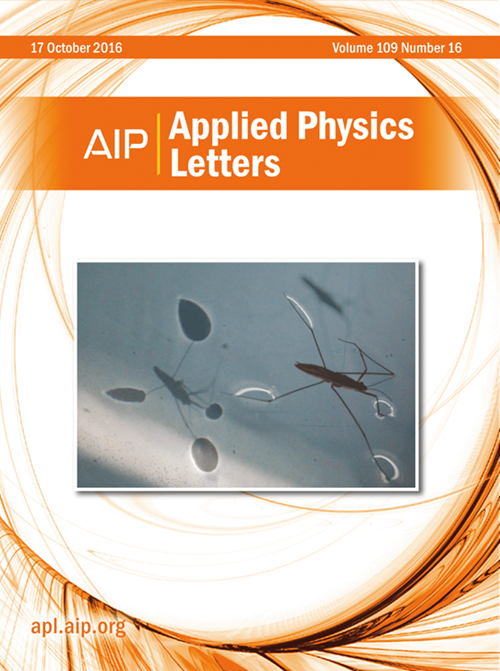IF 3.5
2区 物理与天体物理
Q2 PHYSICS, APPLIED
引用次数: 0
摘要
Bulk CsPbBr3 是一种新兴半导体,在过去十年中,其光电应用性能得到了前所未有的提升。然而,基于 CsPbBr3 的器件的进一步发展却受到其工作时电气稳定性差的阻碍。许多研究小组认为,原生离子(Cs+、Pb2+ 和 Br-)在电场作用下的迁移和积累是造成所观察到的器件不稳定性的原因,但很少有报告直接实验证明运行过程中的离子运动。在我们的研究中,通过掠入射 X 射线荧光 (GIXRF) 对气相生长的 CsPbBr3 多晶层中的离子迁移进行了探测。我们的研究结果表明,在电场作用下,铯和溴都会发生离子迁移,这表明这些离子是造成我们器件中测量到的电流不稳定的原因。在几个小时的时间尺度内,我们发现在顶部电极下移动的铯和溴的离子漂移率相似,都高达 ∼ 20 ppm h-1 V-1 mm。这项工作为更好地理解对 CsPbBr3 器件的光电特性起关键作用的离子运动问题铺平了道路。本文章由计算机程序翻译,如有差异,请以英文原文为准。
Quantification of the ionic migration rates in thick CsPbBr3 films revealed by operando x-ray fluorescence
Bulk CsPbBr3 is an emerging semiconductor that has shown unprecedented increase in performance over the last decade for optoelectronic applications. However, further development of devices based on CsPbBr3 is hampered by their poor electrical stability under operation. Migration and accumulation of native ions (Cs+, Pb2+, and Br-) under electric fields has been suggested by many groups to be responsible for the observed device instabilities, although direct experimental evidence of ionic motion during operation has been seldom reported. In our study, ion migration has been probed by grazing incidence x-ray fluorescence (GIXRF) in CsPbBr3 polycrystalline layers grown in vapor phase. Our findings indicate that both Cs and Br experience ionic migration under electric field, suggesting that these ions are responsible for the measured current instability in our devices. In the timescale of a few hours, the ionic drifting rates of mobile Cs and Br under the top electrode were found to be similar, as high as ∼ 20 ppm h−1 V−1 mm. This work paves the way for a better understanding of ion motion issues that play a key role in the optoelectronic properties of CsPbBr3 devices.
求助全文
通过发布文献求助,成功后即可免费获取论文全文。
去求助
来源期刊

Applied Physics Letters
物理-物理:应用
CiteScore
6.40
自引率
10.00%
发文量
1821
审稿时长
1.6 months
期刊介绍:
Applied Physics Letters (APL) features concise, up-to-date reports on significant new findings in applied physics. Emphasizing rapid dissemination of key data and new physical insights, APL offers prompt publication of new experimental and theoretical papers reporting applications of physics phenomena to all branches of science, engineering, and modern technology.
In addition to regular articles, the journal also publishes invited Fast Track, Perspectives, and in-depth Editorials which report on cutting-edge areas in applied physics.
APL Perspectives are forward-looking invited letters which highlight recent developments or discoveries. Emphasis is placed on very recent developments, potentially disruptive technologies, open questions and possible solutions. They also include a mini-roadmap detailing where the community should direct efforts in order for the phenomena to be viable for application and the challenges associated with meeting that performance threshold. Perspectives are characterized by personal viewpoints and opinions of recognized experts in the field.
Fast Track articles are invited original research articles that report results that are particularly novel and important or provide a significant advancement in an emerging field. Because of the urgency and scientific importance of the work, the peer review process is accelerated. If, during the review process, it becomes apparent that the paper does not meet the Fast Track criterion, it is returned to a normal track.
 求助内容:
求助内容: 应助结果提醒方式:
应助结果提醒方式:


